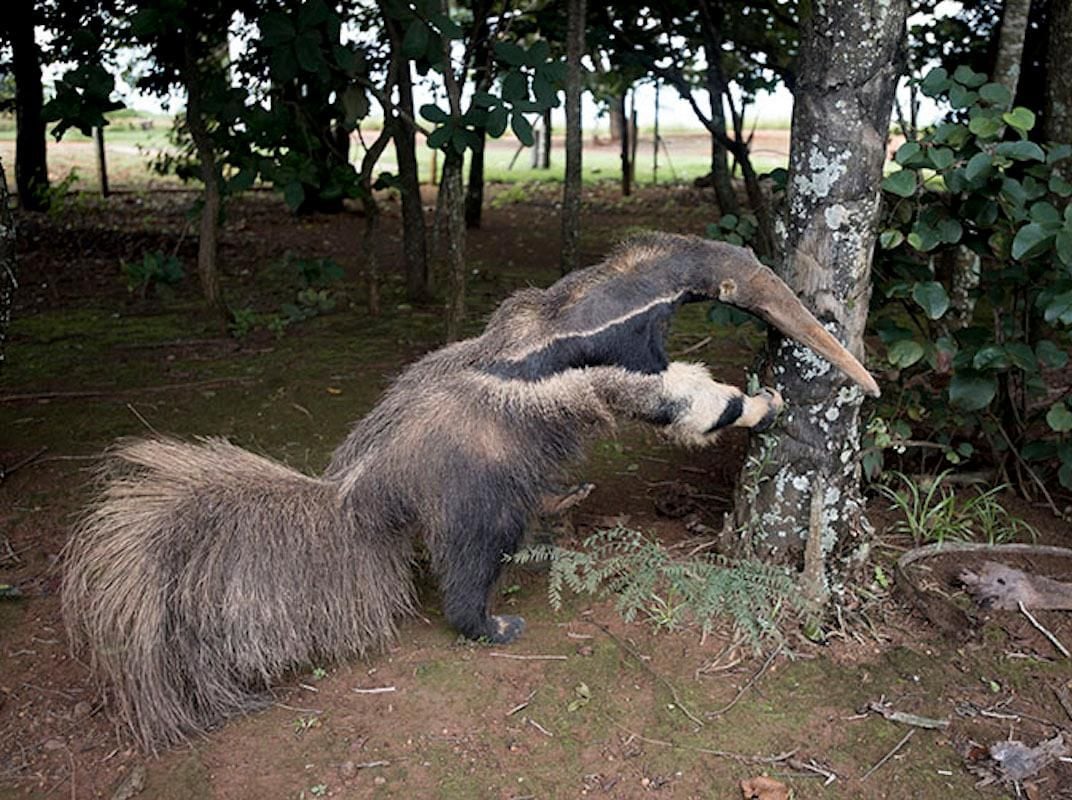Contest Judges Rule Wildlife Photography Winner Used Taxidermic Creature
Brazilian photographer Marcio Cabral has been disqualified and can not enter the competition in the future
/https://tf-cmsv2-smithsonianmag-media.s3.amazonaws.com/filer/7c/4a/7c4a736b-6fca-47fd-b40a-19bb4cf0a49d/marcio-cabral.jpg)
The image is certainly eye catching: On a clear night at Emas National Park, Brazil, a giant anteater appears to be ambling around a termite mound, which is alight with glowing beetle larvae.
Taken by Brazilian photographer Marcio Cabral, judges selected this picture from a pool of 50,000 entries from 92 countries as one of the winners of 2017’s Wildlife Photographer of the Year. But judges are now crying foul, after noticing a striking similarity between the anteater in the image and the stuffed animal kept outside a visitor center at the park, reports Jim Waterson for The Guardian.
The disqualification comes as a result of an anonymous tip in March sent to London’s Natural History Museum, which runs the competition. The following investigation included two mammal experts and a taxidermy specialist from the museum as well as a South American mammals expert and anteater researcher. The team concluded that the anteater was indeed the stuffed creature from the visitor center.
“The five scientists, working independently of each other, all concluded there are elements of the animal’s posture, morphology, raised tufts of fur and patterns on the neck and head that are too similar for the images to show two different animals,” according to a museum press release.
This meant the image violated a competition rule that states: “entries must not deceive the viewer or attempt to misrepresent the reality of nature.” As a result, judges rescinded Cabral’s award, which was for the “animals in their environment” category.

“The competition places great store on honesty and integrity, and such a breach of the rules is disrespectful to the wildlife photography community, which is at the heart of the competition,” Roz Kidman Cox, a member of the 2017 judging panel, says in a museum press release.
The image was also submitted to the “Natural World” category of Smithsonian’s 2016 annual photo contest. Though it was not recognized as a finalist, it was designated an "editors' pick" and was featured as photo of the day on December 7, 2016.
Cabral has denied that he used a stuffed animal in the image, claiming that his submission was the result of waiting three years for the right conditions. As Smithsonian.com reported last year, Cabral says he spent days at the site waiting for the rains to pass and the mounds to light up. He claims that the anteater sauntered up and stuck around long enough for his long-exposure shot.
Cabral tells BBC News’ Jonathan Amos: "It would be very unlikely anyone wouldn't see a stuffed animal being transported and placed carefully in this position" since other park visitors were around at the time.
In cooperating with the investigation, Cabral also supplied image files taken before and after the winning image. None included the anteater.
Cabral did offer an explanation to Amos: "Unfortunately, I do not have another image of the animal because it is a long exposure of 30 seconds and ISO 5000. After the flashes were fired, the animal left the place, so it was not possible to make another photo with the animal coming out of the place that is totally dark."
He also told the museum a witness saw the live animal. But museum officials were unconvinced.
“I find it disheartening and surprising that a photographer would go to such lengths to deceive the competition and its worldwide following,” Cox says.
As Amos reports, this is not the first time the judges of this competition have disqualified a winner. The grand prize photo in 2009 depicted a wild Spanish wolf jumping over a gate, but an investigation revealed that the animal was likely a tame wolf from a zoo, The Guardian reported in 2010.
The museum says Cabral’s image has been removed from the Wildlife Photographer of the Year’s exhibition and tour, and that he is no longer eligible to enter the competition in the future.
As Amos reports, Cabral plans to return to the park later this year for evidence that his image wasn’t staged.